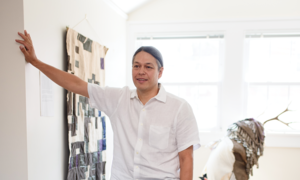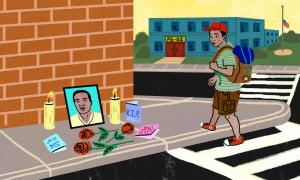author
1,950 Results
article
Ned Blackhawk Q&A: Understanding Indigenous Enslavement

Historian Ned Blackhawk explains why we must understand Indigenous enslavement to fully understand American history.
article
Why Teaching Black Lives Matter Matters | Part I

All educators have the civic responsibility to learn and teach the basic history and tenets of this movement for racial justice.
lesson
Latino Civil Rights Timeline, 1903 to 2006
This timeline is used with "Understanding the History of Latino Civil Rights" and "Exploring the History of Latino Civil Rights" lessons.
July 6, 2017
article
Dear President-elect Trump
Three recipients of the 2016 Teaching Tolerance Award for Excellence in Teaching have an urgent message for President-elect Trump.
article
When a Student Dies
How does a school community deal with the violent loss of a student? Unfortunately, this is a question my school has had to answer too often. Still, no matter how many times I’ve been through it, trying to understand my own pain while holding space for my students to feel theirs is something that pushes me beyond my capacity as a teacher.
article
Planting Seeds, Growing Diversity

STEM classes have long been dominated by white males. Here are ways to make these fields more attractive to girls and students of color.
student task
Do Something
Consuming and Creating Political Art
Students examine the history of political art. They then create their own murals, political cartoons or posters, demonstrating an understanding of social justice issues.
July 13, 2014
article
Enduring Images Captured the Conscience of the Nation
A powerful collection of Civil Rights-era photographs is on display now through August 2010 at the Bronx Museum of the Arts. If you can’t organize a class trip to the museum, consider taking your students on a virtual tour of the era.
student task
Do Something
Identity Self-Portraits
Students create visual self-portraits that contain symbols representing the student’s identity, beliefs, values or areas of interest related to diversity, anti-bias or social justice.
July 13, 2014